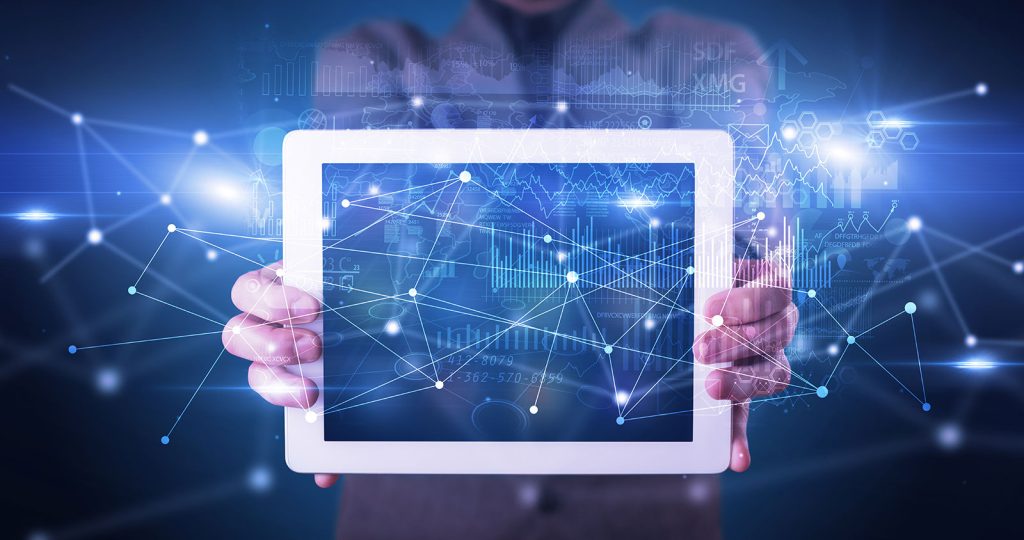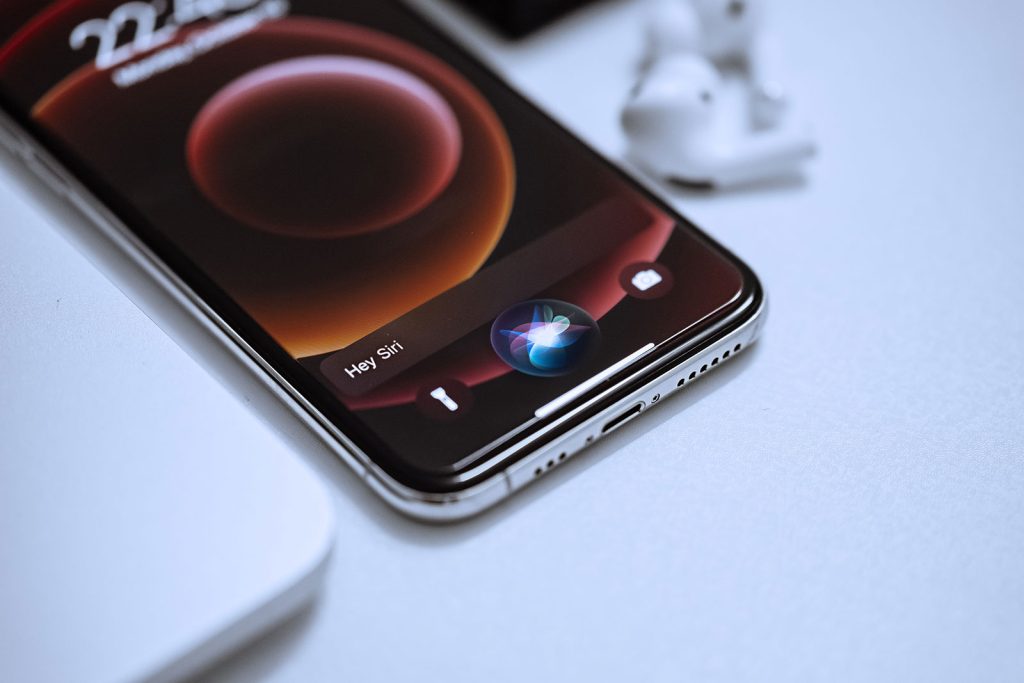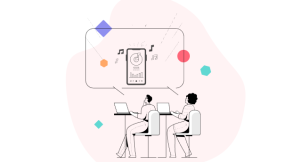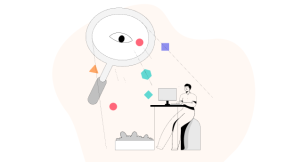Building a market-leading app is what startups and well-seasoned businesses aim for. This doesn’t come as a surprise since the number of app downloads rises gradually every year. In 2022, the count reached as high as 255 billion, and it continues to increase. It is pretty evident that a mobile app is potentially a profitable project.
For software to be successful, it should follow the latest mobile app development trends. Let’s learn about the 15 most prominent trends in modern app development that are the most beneficial to incorporate.

Choosing a reliable developer
to create your innovative mobile app?
Share your project details with Weelorum and
claim your free strategy session
Contact us
How Fast Does the Mobile App Development Niche Grow?
The mobile app development industry is fiercely competitive and constantly evolving at breakneck speed. Its sustained increase in popularity can be attributed to its promise for personalization and convenience across various sectors such as healthcare or finance. The mobile app market is projected to grow significantly by generating more than $755 billion by 2027.
It’s difficult to argue that mobile app development is one of the fastest-growing niches. Naturally, it incorporates technologies from other sectors, so innovative digital solutions appear regularly. One of the ways to succeed in the industry is to keep an eye on promising mobile app development trends. Let’s learn more about them.
Current Mobile App Development Trends in 2023
Here are some of the trending technologies that market-leading apps integrate:
1. Artificial Intelligence (AI)
Artificial intelligence (AI) is a top mobile app development trend with unimaginable potential. Companies are increasingly deploying AI-powered mobile apps to enhance their functionality, usability, and security for customers. Incorporating this technology brings numerous benefits, such as decision-making abilities and personalized user experiences driven by intricate algorithms that learn from user interactions.
Benefits of Implementing AI Into Mobile App Development
- Enhanced user experience. AI-powered mobile apps can deliver highly personalized experiences by analyzing user behavior and preferences. They can offer recommendations, predictive suggestions, and intelligent automation, leading to a more engaging and tailored user experience.
- Increased efficiency. AI algorithms can automate repetitive tasks, streamline processes, and optimize resource allocation. This helps improve app performance, reduce manual effort, and enhance overall efficiency.
- Advanced data analysis. AI algorithms can quickly process large volumes of data and derive meaningful insights. Mobile gaming apps can leverage AI for data analysis, sentiment analysis, natural language processing, and image recognition, enabling intelligent decision-making and improved user engagement.
Implementations
- Virtual assistants. Mobile apps can integrate virtual assistants powered by AI to provide voice-activated assistance, answer user queries, perform tasks, and offer personalized recommendations.
- Chatbots. AI-powered chatbots can engage with users, provide customer support, answer inquiries, and assist with transactions, enhancing user satisfaction and reducing response times.
- Predictive analytics. Mobile apps can gather and analyze heaps of data from users with cutting-edge AI technology. This results in highly informed predictions of individual behaviors.
- Fraud detection. AI algorithms can analyze patterns and detect anomalies in user behavior, helping mobile banking apps identify potential fraud or security breaches.
2. Machine Learning (ML)
Machine Learning is a subfield of AI that involves the development of intelligent systems that can become more accurate at predicting outcomes without additional explicit programming required. It’s done based on historical data. ML is used to improve AI-based assistants, predicting algorithms, and other smart technologies incorporated into mobile apps.
Machine learning focuses on developing algorithms that enable systems to learn and improve from experience without explicit programming. These algorithms analyze data to identify patterns, make predictions, and automate tasks.
Benefits of Implementing ML into Mobile App Development
- Personalized user experiences. ML algorithms analyze user data, including preferences, behaviors, and historical patterns, to deliver personalized recommendations, content, and experiences.
- Improved efficiency and automation. ML automates repetitive tasks, optimizes processes, and makes intelligent predictions.
- Enhanced data analysis and insights. Implementing innovative machine learning algorithms provides a powerful tool for assessing large datasets. With the ability to pinpoint critical information by identifying patterns or trends, companies can make decisions based on sound analysis, improving business operations significantly.
Implementations
- Recommendation systems. ML-powered recommendation systems can enhance mobile commerce, content streaming, and social media apps through personalized product or content suggestions based on user preferences and behavior.
- Intelligent chatbots. ML-based chatbots can understand natural language, provide personalized assistance, answer user queries, and offer support. They can be integrated into customer service or social media apps.
3. Augmented Reality (AR) and Virtual Reality (VR)
AR and VR have gained popularity thanks to interactive games. Augmented Reality (AR) overlays digital information in the real world, while Virtual Reality (VR) creates a simulated, immersive environment. AR and VR technologies enhance user experiences by blending digital elements with the physical world or providing entirely virtual experiences.
Currently, they serve educational purposes as training simulators. Besides hands-on training experience, AR and VR may be used by online shoppers. Many marketplaces offer the possibility to “try on” an item on the phone.
Benefits of Implementing AR and VR into Mobile App Development
- Enhanced user engagement and interaction. AR and VR technologies provide immersive and interactive experiences, capturing users’ attention and fostering engagement. They can offer unique and captivating exchanges with digital content in real-world or virtual environments.
- Innovative marketing and product visualization opportunities. AR and VR enable businesses to showcase products or services visually, compellingly, and interactively, enhancing marketing campaigns and customer experiences.
- Training simulations and virtual tours. AR and VR can be used for training, allowing users to simulate real-world scenarios, practice skills, and explore virtual environments without physical limitations.
Implementations
- AR-based gaming experiences and interactive shopping apps. Mobile games can incorporate AR features, such as overlaying digital objects onto the real world, creating interactive gameplay experiences. Shopping apps can use AR to allow users to visualize products in their environment before purchasing.
- VR-based virtual tours and immersive storytelling. Mobile apps can provide virtual tours of locations, museums, or real estate properties, offering users an immersive experience. VR can also be used for storytelling, immersive narratives, or educational content.

4. Internet of Things (IoT)
IoT in mobile app development involves integrating mobile apps with IoT devices to provide connected experiences. Any computerized device exchanging data with connected units through the internet is an IoT device. Smart vehicles, devices, and even entire houses fall into this category.
Every IoT unit requires software platforms to regulate its functioning, from smartwatches to Teslas. From the development perspective, companies have plenty of work integrating IoT technology in various devices and ensuring they work smoothly.
Benefits
- Enhanced automation, control, and monitoring. Letting users control and monitor connected devices, appliances, or systems from a remote location in real-time, IoT-enabled mobile apps offer convenience, energy efficiency, and automation.
- Improved energy management. With the aid of IoT apps, users can take charge of their surroundings by regulating smart home gadgets, security frameworks, and energy utilization, among other aspects. This approach helps users save costs.
- Real-time data collection for actionable insights. IoT devices connected to mobile apps collect and transmit real-time data, which can be analyzed to gain insights, identify trends, and make data-driven decisions.
Implementations
- Home automation apps. Smartphones have significantly expanded the potential of wearable tech by utilizing mobile apps with fitness trackers or smartwatches.
- Fitness apps integrated with wearables. Controlling multiple smart devices within a house environment — namely thermostats, lighting systems, security cameras, and household appliances — all with just a few taps on smartphone applications.
- Connected car apps. Currently, mobile apps possess the capability to engage in communication with IoT-enabled vehicles. Interaction between these systems promotes advantageous features like vehicle diagnostics, GPS tracking, maintenance alerts, and remote locking/unlocking functions.
5. On-Demand Apps
This mobile app development trend skyrocketed during the covid 19 pandemic. Apps for food delivery, taxi and at-home services, and many others quickly gained enormous popularity. Since on-demand apps offer solutions that address urgent issues, this niche will never go away completely.
On-demand apps connect users with various services and products in real time, allowing them to request and receive immediate service or delivery. They provide convenient and seamless access to goods and services.
Benefits of Implementing on-demand apps:
- Convenience and instant access. Embracing on-demand apps grant users swift and simple entry to a range of essential services and products. By reducing arduous manual tasks and frustrating waiting periods inherent in traditional approaches, productivity increases as efficiency thrives with this new technology.
- Efficient resource utilization. Optimizing resource allocation is critical for businesses seeking long-term success and profitability. Companies can achieve this goal by accurately matching supply with demand in real-time.
- Enhanced customer experience. Users can expect seamless and individualized experiences from on-demand apps that cater to their preferences. Tracking orders, submitting ratings and reviews, and receiving customer support are simplified.
Implementations
- Ride-hailing and food delivery apps. Seeking transportation or food delivery services no longer requires cumbersome processes thanks to innovative solutions like Uber or DoorDash.
- Home services apps. Apps like TaskRabbit or Handy connect users with professionals offering home services such as cleaning, plumbing, or repairs, providing quick access to skilled workers.
- On-demand healthcare or beauty services. Apps in the healthcare or beauty industry allow users to schedule appointments, book consultations, or access services like telemedicine or on-demand beauty treatments.

6. Mobile Banking
Users can conveniently access essential financial services and perform transactions on the go securely. What sets these innovative tools apart is their unmatched convenience, flexibility, and trustworthy security features tailor-made for every personal finance need.
In FinTech discussions today, it remains clear that modern advancements in the banking sector lead to technological innovation. Mobile app developers should pay particular attention to the exceptional security of banking solutions.
Benefits of Mobile Banking Apps:
- Convenient access to financial services. The emergence of mobile banking apps has been instrumental in easing the process of financial transactions. You can perform banking activities at any time and location.
- Enhanced security and fraud prevention. Mobile banking apps take extraordinary steps to protect confidential user data. Some key strategies they use include advanced encryption protocols and biometric authentication systems.
- Efficient and streamlined financial management. Among these benefits are the ability to track accounts easily, instant execution of secure fund transfers, expeditious bill payments processing, and comprehensive resources for astute budgetary planning.
Implementations
- Account management. Mobile banking applications empower users to oversee their financial activities by accessing their transaction history, account balances, and statements.
- Mobile check deposits. Ensuring maximum ease and efficiency for their clients, most modern-day mobile banking apps transform check deposits into an effortless process that only involves taking a photo through one’s phone camera.
7. Wearables
The market for wearable devices continues to grow, meaning that more digital solutions are needed to back the electronics up. Every wearable form requires a fully-fledged app, from smart watches and bands to jewelry. They help gather the owner’s data, measure and analyze vital signs, and generate advanced statistics.
Benefits of Wearables
- Seamless integration with mobile apps. Smartwatches and fitness trackers are examples of wearable technology that can work with mobile apps to offer tailored insights, alerts, and live information.
- Health and fitness tracking. These mobile devices make tracking fitness objectives hassle-free while keeping you on the road to healthier living.
Implementations
- Fitness and wellness apps. Wearable devices track movements accurately while providing reliable workout tips and individualized wellness recommendations.
- Notifications and alerts. Users can remain connected to mobile devices without frequently checking them, thanks to wearable devices that can showcase notifications, incoming calls, and messages from mobile applications.
8. Biometric Authentication
The act of authenticating you using your exclusive physical or behavioral characteristics is what defines biometric authentication. Mobile devices leverage biometric technologies like facial recognition and fingerprint scanning to create unparalleled security and convenience for users. Fingerprint scanners or facial recognition technologies are present in nearly every modern app.
Correspondingly, developers can integrate the biometric authentication functionality in their digital solutions. It significantly boosts the usability and security level of an app.
Benefits of Implementing Biometric Authentication
- Enhanced security. Fingerprint scanning and facial recognition biometric authentication methods surpass traditional passwords and PINs.
- Fraud prevention. Each person’s biometric data is distinct, rendering it challenging for those without authorization to access confidential data.
Implementations
- Fingerprint or Touch ID. By providing an alternative form of biometric authentication via fingerprint scanning within mobile apps, developers offer an added layer of security and ease of use for users.
- Facial recognition. Secure authentication is made possible with front-facing mobile app cameras that scan and verify a user’s face, granting entry to sensitive information or facilitating transactions.
- Voice recognition. Voice biometrics can be employed in mobile apps to analyze and authenticate the user’s voice, adding a layer of security for certain functionalities or transactions.
9. Voice Technology
With voice technology, people can engage with mobile applications using their natural language or specific voice commands. This advanced tech supports hands-free usage, enables spoken searches, and promotes the completion of tasks via vocal interaction.
Voice technology is a relatively new development amidst mobile development trends. Most still regard it as a fun gimmick, while in reality, voice tech has already become a trending feature. Currently, there are multiple ways in which voice technology is used:
- Voice assistants;
- Voice search;
- Voice User Interface (VUI).
Benefits of Implementing Voice Technology into Mobile App Development
- Hands-free and intuitive interaction. Voice technology allows users to interact with mobile apps using voice commands, providing a hands-free and convenient experience.
- Improved accessibility. Voice-enabled apps cater to users with disabilities or difficulty typing or navigating through traditional interfaces.
- Enhanced user engagement. Voice technology adds a conversational and natural element to app interactions, increasing user engagement and satisfaction.

Implementations
- Voice assistants. Mobile apps can integrate with voice assistants like Siri or Google Assistant, enabling users to perform actions, retrieve information, or control app features using voice commands.
- Voice search. Apps can implement voice search functionality, allowing users to search for specific content, products, or information by speaking their queries instead of typing.
- Voice-controlled apps. Certain apps, especially those related to home automation or media streaming, can be controlled entirely through voice commands, offering a hands-free and seamless user experience.
10. Blockchain Technology
Blockchain technology is a decentralized and distributed ledger system that records transactions securely and transparently. In recent years, blockchain has gained traction as a vital tool in mobile app development thanks to its advanced capabilities, such as improved user experiences, strengthened security measures, and unparalleled data privacy solutions.
Mobile apps can now provide secure data storage solutions via traceability functions while offering better ways through safe peer-to-peer transactions. With the spread of blockchain technology and mobile banking, more apps will incorporate blockchain solutions.
Benefits of Implementing Blockchain Technology
- Enhanced security and transparency. Blockchain technology is a robust tool that enables secure and transparent storage of data and transactions without centralization. This decentralized platform ensures the safekeeping of information, preventing tampering and fraud.
- Streamlined processes and reduced intermediaries. This game-changing innovation presents faster and more affordable transactional methods without requiring dependence on the conventional confines of banks or other financial entities.
- Improved data integrity and authentication. Blockchain enables verifiable and immutable records, making it useful for secure data storage and authentication applications.
Implementations
- Cryptocurrency wallets. Mobile apps can serve as wallets for storing and managing cryptocurrencies, leveraging blockchain technology to ensure secure transactions and ownership verification.
- Supply chain and logistics. Blockchain-based apps can track and authenticate the movement of goods across the supply chain, ensuring transparency, traceability and reducing fraud or counterfeit products.
- Smart contracts. Mobile apps can facilitate the execution of smart contracts, self-executing agreements stored on the blockchain, automating and validating contract terms and conditions.
11. Beacon Technology
Beacon technology involves small, wireless devices that transmit signals using Bluetooth Low Energy (BLE). Mobile apps can detect these signals to provide location-based information, personalized notifications, and proximity-based interactions. Beacon technology is a trendy way to exchange data with users’ smartphones offline.
Ever wonder how your smartphone appears to know precisely what stores or amenities are nearby whenever you enter malls or airports? These rapidly appearing “digital detectives” are known as beacons.
These tiny but mighty transmitters utilize Bluetooth connectivity to connect with your smart device. They are deployed in various facilities — from hospitals to universities and transportation hubs. Beacons efficiently alert users of promotions updates and provide essential navigation guides when they’re in proximity.
Benefits of Beacon Technology:
- Proximity-based personalized experiences. Beacon technology enables mobile apps to deliver contextually relevant content, offers, or notifications based on the user’s physical location.
- Improved customer engagement and loyalty. Beacon-enabled apps can provide targeted promotions, discounts, or rewards to users, enhancing their overall experience and encouraging repeat visits.
- Efficient indoor navigation. Beacons can help users navigate complex indoor spaces like shopping malls, airports, or museums, providing real-time directions and personalized recommendations.
Implementations
- Retail and marketing. Mobile apps in retail environments can use beacons to send personalized offers, product information, or discounts based on the user’s location within a store.
- Museums and tourist attractions. Apps can utilize beacons to provide location-specific information, audio guides, or interactive experiences to enhance the visitor’s engagement and learning.
- Indoor navigation and wayfinding. Apps incorporating beacon technology can guide users through large indoor spaces, helping them navigate complex layouts, find specific points of interest, or locate friends or colleagues.
12. Apps for Foldable Devices
Foldable devices are smartphones or tablets with flexible displays that can be folded or unfolded. Apps designed for foldable devices offer enhanced multitasking, optimized layouts, and seamless transitions between screen modes. Samsung, Huawei, LG, and other large manufacturers actively promote their first phones built with foldable displays.
This trend presents an opportunity for both manufacturers and app developers. Digital solutions adapted to the unique, foldable screens may be highly popular during the next few years. At least, the technology for adjusting app size and layouts to foldable screens will be incorporated in nearly every mobile application.
Benefits of Developing Apps for Foldable Devices
- Enhanced multitasking and productivity. Foldable devices offer larger screens and innovative form factors, allowing users to multitask, view content in split-screen mode, or seamlessly transition between different app layouts.
- Improved user experience and content consumption. Apps optimized for foldable devices provide immersive and engaging experiences, utilizing such devices’ expanded screen real estate and unique capabilities.
- Flexibility and adaptability. Apps designed for foldable devices can adjust their layout, orientation, or content presentation based on the device’s folding configuration, offering a versatile and adaptable user experience.
Implementations
- App continuity. Apps can seamlessly transition between different screen modes or folding configurations, ensuring a consistent user experience without interruptions or data loss.
- Multitasking and split-screen views. Apps can take advantage of the larger screen area in foldable devices to enable the simultaneous use of multiple apps, split-screen views, or enhanced multitasking capabilities.
- Adaptive layouts and content presentation. Apps can dynamically adjust their user interface, content placement, or navigation based on the folding configuration, providing an optimized experience for unfolded and folded states.
13. Gamification
Gamification involves integrating game-like elements into non-game contexts to engage and motivate users. It uses challenges, rewards, and leaderboards to make tasks more enjoyable and increase user participation.
Benefits of Implementing Gamification
- Enhanced user engagement. Gamification is an effective approach to garnering users’ attention and driving engagement, ultimately leading them toward completing desired actions.
- Improved user retention. It increases gaming app retention rates by inspiring user engagement and fostering loyalty.
Implementations
- Language learning apps. By incorporating gamified elements like badges or levels, language learning apps can make the process more enjoyable and motivate users to continue learning.
- Productivity apps. Gamification can turn tasks and goal completion into a game, making them more engaging and encouraging users to be more productive.
14. Enhanced Personal Data Protection
Enhanced personal data protection measures involve implementing advanced security protocols and privacy practices to safeguard user data from unauthorized access and breaches. Healthcare, financial & security apps are some examples that need the highest level of data protection.
Benefits of Implementing Enhanced Personal Data Protection Measures
- Building user trust. By prioritizing data protection, apps can build trust with users, assuring them that their sensitive information is secure.
- Regulatory compliance. Implementing robust data protection measures helps apps comply with data privacy regulations, reducing legal risks and potential fines.
Implementations
- Encryption and secure authentication methods. Apps must deploy advanced safety protocols, including encryption to protect user info and robust verification processes like two-step verification.
- Regular security audits and transparent privacy policies. It’s crucial to conduct periodic security audits to keep the app’s infrastructure secure. Equally important are transparent privacy policies that enlighten users on the data collection and usage procedures.
15. Cloud-Based Testing & Debugging
Cloud-based testing and debugging involve utilizing remote servers and infrastructure to perform testing, debugging, and monitoring in full-cycle mobile app development. It eliminates the need for local testing resources and provides a scalable and efficient environment for app development.
Benefits of Cloud-Based Testing and Debugging
- Testing on diverse environments. Cloud computing platforms allow testing on various devices, operating systems, and network conditions, ensuring app compatibility and functionality across different scenarios. Android users cannot complain about being left behind using beta apps.
- Scalability and faster testing cycles. With cloud-based infrastructure, app testing can be scaled up or down based on demand, enabling shorter testing cycles and reducing time to market.
- Real-time monitoring and issue resolution. Cloud computing offers real-time monitoring of app performance, crash reports, and debugging tools, allowing developers to identify and resolve issues promptly.
Implementations
- Leveraging cloud-based testing platforms. Developers can use cloud-based testing services that provide a wide range of virtual devices and environments for comprehensive app testing.
- Real-time monitoring and crash reporting. Mobile apps can integrate with cloud-based services that monitor app performance, crash analytics, and error reporting for effective debugging.
- Collaborative debugging and streamlined bug tracking. Cloud-based platforms facilitate collaboration among developers, allowing them to share debugging information, track bugs, and resolve issues efficiently.
Consider Weelorum as Your Guide to Mobile App Development Trends
We know that our development team will build you a great app that incorporates the latest trends because:
- Not only do we follow the innovations introduced by Apple and Google (as major mobile market players), but we also join their early access for developers programs to try new products and features. Those customers who are eager to try new features first can benefit from this.
- We were among the first teams who had started using JetPack Compose UI for Android, which helps with native UI building and saves time on UI-related tasks.
- Our designers, developers, and QA regularly attend conferences, new product presentations, and educational courses. Thus, we offer our customers the most up-to-date development solutions.
- We are working on innovative products ourselves, so besides having a product-oriented mindset, we develop and test a lot. One of our products will be launched for the wellness market soon and present a new way of managing healthy habits.
- Our decisions are based on data and understanding of the market trends. We believe this is how product development should work.
Partnering with us means gaining access to a team of experienced developers; be assured that your vision is in good hands. We have been successfully integrating modern trends in mobile solutions:
- Jon D. Rock — thanks to AI algorithms, the app can offer portfolio allocations, provide users with automatic emergency fund levels, and create savings plans. Users will get long-term life goals — for 5, 10, or 30 years.
- Swim-Wise — this swimming AI mentor can analyze each swimming session and provide valuable insights. It will track strokes, suggest improvement techniques, and evaluate swimmers’ performance.
- Botigy — this app enables anyone to teach AI-powered bots to understand their surroundings. Snap photos, label them, and make your bot smarter with every new shot.
Drop our support team a line, so we can offer you our high-end dev services and any accompanying assistance
Contact usFAQ
What are the most promising current trends in mobile app development?
5G technology is poised to transform mobile application development. It will leverage inherently faster speeds and reduced latency than the preceding generation. They enable seamless real-time AR/VR experiences, high-definition video streaming, and convenient large file downloads.
What app development trends are underrated?
The advent of AI, ML, and IoT technologies has led to a world of possibilities for mobile app developers. By effectively integrating these game-changing advancements, a new realm of exciting and innovative applications has emerged in the fast-moving market.
Top trends in modern mobile app development include harnessing 5G technology, incorporating Internet of Things devices, and artificial intelligence tools like machine learning algorithms or deep learning neural networks, which even simulate human thinking patterns. Other exciting areas under experimentation are trending toward AR/VR experiences for enhanced visuals or even progressive web apps that take usability up a notch.
Which of the latest trends in mobile app development will be soon irrelevant?
Although it's difficult to determine when particular emerging developments will stop being trendy in mobile app development contexts, several recent ones show signs of potential irrelevance over time. These include QR codes and app cloning, followed by apps reliant entirely upon third-party platforms; they might experience a downturn in popularity soon.
Furthermore, some specialized AR applications have seen scarce mainstream use and could gradually lose appeal. That said, we should remember that trends' significance evolves continually with developing technologies and changes in user desires.


